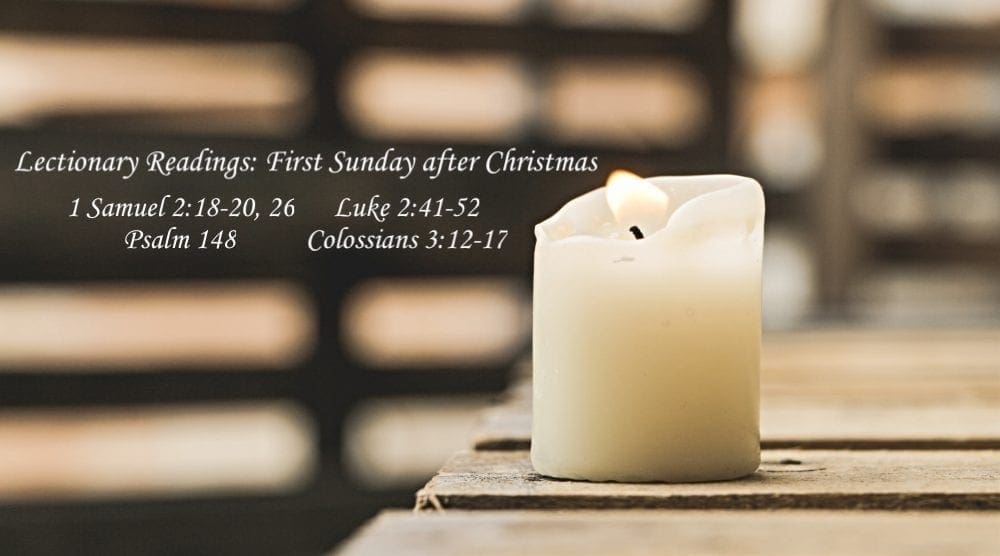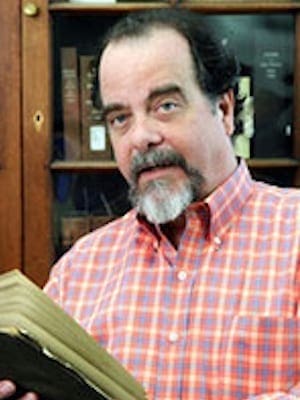Bing Crosby has been treating us to “White Christmas” almost everywhere we turned for the last month.
We heard him in grocery stores, shopping centers, elevators and even when we were put on hold after calling places too busy to talk to us.
Let’s give Bing his due: Until Elton John’s remake of “Candle in the Wind” to honor the memory of Princess Di, “White Christmas” was the best-selling single recording in history.
But, of course, the familiar and popular song has nothing to do with Christmas. It engages a nearly pure cultural expression, which for generations has fueled commercialism and its attendant consumerism.
People of a certain age recall, for example, that the Macy’s Thanksgiving Day Parade was a commercial ploy to mark the beginning of the Christmas season. That meant the season of Christmas shopping.
It did not take long for the commercial/consumer impulses to emerge well before Halloween, another seasonal observance with Christian roots that was co-opted for reasons quite removed from its origin of preparation for solemn remembrances of martyrs (All Saints Day) and those who died in the embrace of faith in the hope for resurrection (All Souls Day).
Year by year and generation by generation, what was conceived (pun intended) as a time for reflection and faithful waiting – Advent – has suffered the insult of premature Christmas.
And, on Christmas Day, our culture drops the so-called reason for the season and dashes off to the next shiny, commercial events on the horizon: New Year’s Eve and then the Super Bowl.
The irony is now that Christmas Day is behind us, we don’t hear Bing sing anymore. The irony is only for Christians who have been observing Advent and who now are in the throes of Christmastide.
On Christmas Day, the white Christ candle welcomed the flame that had been passed around the candles of hope, peace, joy and love.
When the flame rested upon the Christ candle, all of the others became white too. The purples and pink gave way to the Christ-white.
The brightness of the Light of the World blanched the color out of the other candles on the wreath and we had a white Christmas, indeed.
On the Sunday after Christmas, our lectionary readings challenge us to fan the flames of the Christ candle. Christmastide is a time to cultivate our own version of candles in the wind.
Through prophet, psalm, epistle and Gospel, we have a chance to focus upon the effect of the Light of the World who has come to us, again, at the darkest time of the year.
With the first reading from Samuel, we sigh deeply at the appearance of Samuel.
“Aaahhhh!” we breathe. “Now we know where Luke got his inspiration for telling the wondrous story of the births of John and Jesus!”
We know that Hannah and Elkanah are both echoes of Sarah and Abraham and foreshadowings of Mary and Joseph.
We know that Samuel prefigures both John (the Baptist) and Jesus. All three sons are described as growing in favor with God and humanity (see 1 Samuel 2:26 and compare with Luke 1:80, Luke 2:40 and Luke 2:52).
Samuel changed everything. He was the transition from judge to king and was the first to define both priest and prophet in relationship to the king.
For Christians, Samuel represents a new beginning in the way God relates to us. For Christians celebrating Advent and Christmastide, Samuel focuses both the hope and fulfillment of our waiting for the newness of life that God’s presence always brings.
Psalm 148 has the widest embrace of any passage in Christian Scripture.
For 10 verses, the psalm stretches out to the very limits of creation, demanding that all creation join the chorus of “Praise the Lord.”
The “Hallelujah!” echoes from the vastness of heavens, including “sun and moon … and stars” (verse 3) all the way to the sting of the hailstone (verse 8) and the unique sounds of herds of animals, clouds of insects and flocks of birds (verse 10). The final four verses invite “all peoples” to join in the song of praise.
White Christmas, indeed! The brightness of the Light of the World blanched the color out of the other candles on the wreath and “Praise the Lord” is what all of creation sings.
The psalm reminds us that God the Redeemer is first of all God the Creator. Hallelujah! Let all creation sing.
In the Christ-white brightness of the blazing Advent wreath, the epistle on the Sunday after Christmas moves us from the embrace of all creation to the effects of knowing the embrace of God in Christ.
“Hallelujah!” is not only for our mouths. “Let the word of Christ dwell in you richly; teach and admonish one another in all wisdom; and with gratitude in your hearts, sing psalms, hymns and spiritual songs to God. And whatever you do, in word or deed, do everything in the name of the Lord Jesus, giving thanks to God the Father through him” (Colossians 3:16-17).
To know the embrace of God in Christ changes everything. Words and deeds and the stirrings of our hearts, all transformed by love and peace and thankfulness (Colossians 3:14-15).
On this Sunday after Christmas, the Gospel reminds us that the birth of Jesus is but the beginning of a life of growing and maturing in the presence of God.
Luke ends his narratives of the birth of Jesus with a brief glimpse of Jesus on the boundary between childhood and adulthood.
As a 12-year-old, Jesus begins to extend his reach beyond the limits of family and friends.
He finds himself in the temple in the company of the teachers, “listening to them and asking them questions” (Luke 2:46).
The narrative ends with an echo of the prophet. “And Jesus increased in wisdom and in years, and in divine and human favor” (Luke 2:52; compare 1 Samuel 2:26).
On the Sunday after Christmas, we have the chance to fan the flame of the Christ candle with the winds of hope, peace, joy, love and gratitude. Let it be so, “Praise the Lord! Hallelujah!”
May the embrace of God in Christ transform our hearts and minds so that we, in turn, might grow in grace and find courage to embrace our world.
It is the prophets, the psalms, the epistles and the gospel.


